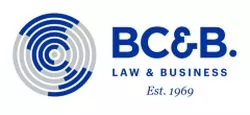Introduction
Trade secrets have played a role in the protection of technology and knowledge for centuries. For instance, in the preHispanic cultures that existed in the current territory of Mexico, knowledge of the astronomical seasons and their impact on agricultural cycles was kept to a select few, welleducated people and incorporated into the architectural design of buildings. Outside the elite, knowledge was limited to what was necessary for performing activities such as preparing the soil, planting the seeds and harvesting. Everything was executed at the times mandated by the ‘gods’, who explained themselves through the stars as evidenced by the signs on the buildings and observation of the skies.
The economic, political and social power that such knowledge provided back then is comparable to the present situation. Knowledge is now recognised as a key asset that can be developed faster by sharing and building on the knowledge of others. The new open-innovation paradigm has redefined IP management and a lot of attention has been directed towards the patent system – perhaps because trade secrets might seem to be burdensome and contrary to this paradigm.
However, the realities of day to day industry practice mean that know how and trade secrets remain relevant tools for competitiveness. In the chemical, biotechnology and IT industries, control over key information is the differentiator between competitors. However, this control is becoming more challenging to maintain in light of current trends (eg, cloud computing and open innovation), which mean that information constituting a trade secret may be developed by different parties in different countries under what is perhaps the least standardised right in IP law.
Lack of international standards
Unlike IP rights, which are granted by state bodies and subject to international treaties, the recognition and enforcement of trade secrets vary widely from country to country.
Even within one jurisdiction, regional trade secret laws may vary to an extent that necessitates uniformity legislation, such as the as yet partially implemented US Uniform Trade Secrets Act.
The wide range of different legal tools (eg, confidentiality agreements) and statutory obligations involved makes it even more difficult to standardise and define a trade secret as such – particularly where different activities are performed in different countries, as is increasingly common in openinnovation environments.
Although the Agreement on Trade Related Aspects of Intellectual Property Rights (TRIPs) and other free trade agreements include some rules on the availability and enforcement of protection for confidential information, the specific laws of different countries vary greatly with regard to scope, duration and enforcement routes. While in some countries breach of a trade secret may be treated and enforced as criminal conduct, in others it may be a civil or even administrative offence.
Nevertheless, under the broad definition of Section 7, Article 39 of TRIPs, a trade secret exists when information:
- is secret in the sense that it is not, as a body or in the precise configuration and assembly of its components, generally known or readily accessible to persons within the circles that normally deal with the kind of information in question;
- has commercial value because it is secret; and
- has been subject to reasonable steps, under the circumstances, to keep it secret by the person lawfully in control of the information.
These requirements may seem straightforward; however, in practice, the relevance of the information to the business, the commercial value and what constitutes ‘reasonable steps under the circumstances’ are difficult to assess.
Within companies, therefore, the management of trade secrets is considered at least equally as important as the applicable laws – if not more so. This is because once information constituting a trade secret has escaped its owner’s control, the consequences are often irreversible and unmanageable, and the remedies available under any law may be insufficient to recover from the loss.
Cloud computing, big data and the need to manage risk Along with the openinnovation trend (and perhaps as a consequence of it), concerns about data privacy and control over private information have also increased significantly. A key question for risk management is now who can access, control, analyse and store private information – from financial data at banking institutions to private photos of celebrities stored on cloud computing platforms.
In addition to compliance with the many data privacy laws, companies that manage large quantities of customer or user information require additional reliability and certainty in the management of such information. This requirement has led to the creation of information management systems and the ISO 27001 information security management standard, last updated in 2013.
Although the standard initially addressed concerns relating to third party personal data, it has evolved to cover all information relating to the business of an organisation and provides a list of good practices for managing internal information relating to trade secrets – even if there is no personal data to manage.
Risk assessment in intellectual asset management and information security
The similarities between best practices for the management of intangible assets and for information security are perhaps unsurprising; however, companies generally do not capitalise on them.
Asset inventory is essential in the management of intangible assets and also plays a key role in information security. In the information security community, ‘secure information’ is information that is:
- confidential – all information should be assigned a level of confidentiality and managed accordingly. For example, information that is supposed to be confidential should not be accessible to anyone, whereas information that is supposed to be public should be easy to access;
- complete – information should be kept in one body, with no false, hidden or missing elements. This means that all information necessary for a determined activity or role should be kept together; and
- available – information should be accessible by those who need it, when they need it and where they need it.
Meeting the standard for secure information involves two processes:
- asset management, including asset registration, classification and labelling; and
- access control, including user registration, password management, maintenance of a transparent work environment, operating system and application control and network security.
However, these processes cannot be carried out effectively without prior risk management. The temptation to classify everything as confidential or secret is great and is often highly dependent on perception rather than objective measurements. It follows that unless risk is objectively assessed, the proportion of resources invested in maintaining confidentiality will be based on subjective judgements.
In general, a risk assessment strategy first requires the identification and characterisation of threats. A ‘threat’ is a possible occurrence which may harm the business. Whether and to what extent a business will be harmed by the occurrence depends on the vulnerability of its critical assets to specific threats. The balance of threats and vulnerabilities determines the risk – including the expected likelihood of an occurrence and its possible consequences on a specific asset.
Once these factors are determined, the organisation will be in a position to identify ways to reduce risk and to prioritise strategic investment in risk minimisation.
Risk cannot be completely eliminated. The premise of risk management is that an organisation needs to establish a certain level of acceptable risk for virtually every intangible asset. The lower the desired level of risk, the more costly and sophisticated the measures required. Accordingly, the most stringent security measures and greatest investment will go to the most vulnerable and important intangible assets.
Risk assessment facilitates the classification of secure information as ‘confidential’, ‘complete’ or ‘available’. Applied to trade secrets, this assessment enables companies to navigate the uncertainties of the legal framework and determine cost effective measures of keeping information secret and under control.
In most companies without information management systems, information is ultimately under the control of the individuals who have access to it – not the company. Of course, threats to intellectual assets are often unique and intimately related to the behaviour of individuals. However, a risk profile will allow the company to identify the personnel or consultants who should take on particular or separate confidentiality obligations based on the risk to any particular intangible asset.
Similarly, following such assessment, information may be stored or moved from its physical form (eg, paper) to its virtual form and vice versa, depending on its profile. Such profile will also determine the measures for protecting the knowledge, including in concert with other intangible assets (eg, patents, registers, agreements and defensive publications).
From an information security perspective, asset management involves identifying the people in charge of each asset and the processes in which the asset is used. In practice, this process resolves the most complicated aspects of reporting the value of an intangible asset to an organisation.
Information security: a pathway to compliance with legal definitions
In practice, the establishment of an information security management system guarantees that the following major steps – important in defining a trade secret – are achieved:
- The information constituting a trade secret (ie, that which is important and makes the business vulnerable if exposed) is expressly identified.
- Measures are taken to protect the information constituting a trade secret (ie, satisfying the requirement for ‘reasonable steps under the circumstances’).
- The parties responsible for the storage, access and use of the information are identified.
- The risk, preventative measures and information attributes are managed systematically (not subjectively).
From the legal perspective, an information security management system will ensure apparent compliance with the requirements for protection of undisclosed information under TRIPs. The asset will be identified as secret, of commercial value to the organisation and with the reasonable measures taken to keep it secret duly identified and implemented.
Comment
Under the openinnovation paradigm, it is assumed that knowledge and information must be available to anyone that can foster innovation. However, in reality, this information must coexist with information whose secrecy is essential and which should be accessible only to a limited group of people. Under these circumstances, risk assessment and information security management systems are critical tools for the management of intangible assets. They ensure that trade secrets are kept secret and that information which must be shared or protected remains under transparent management by appropriate parties.
The content of this article is intended to provide a general guide to the subject matter. Specialist advice should be sought about your specific circumstances.

